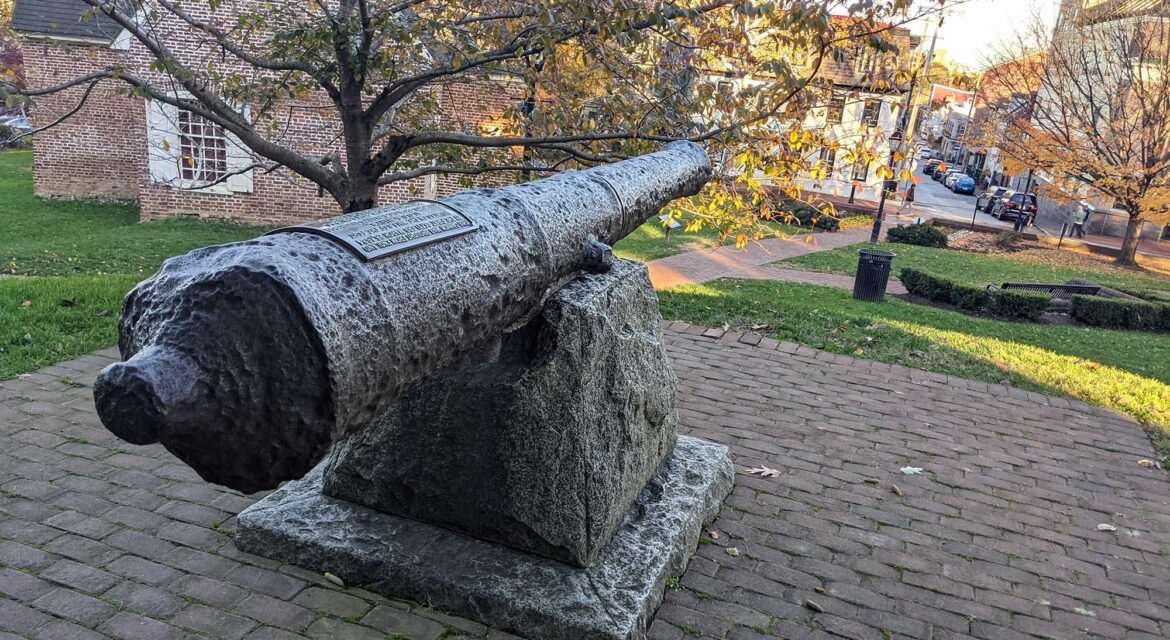 The oldest United States capitol building in continuous legislative use, the Maryland State House has an important connection to the nation as well as to where it resides in Annapolis, Maryland. The history and experiences that have been cultivated across the site have contributed to a legacy that is an inherent part of the modern community, highlighting what it can mean to transform what might have otherwise just been part of the landscape into a means of identity and engagement.
The oldest United States capitol building in continuous legislative use, the Maryland State House has an important connection to the nation as well as to where it resides in Annapolis, Maryland. The history and experiences that have been cultivated across the site have contributed to a legacy that is an inherent part of the modern community, highlighting what it can mean to transform what might have otherwise just been part of the landscape into a means of identity and engagement.

From the First Settlers to the Revolutionary War to Modern Annapolis
 Serving as the home of the United States Congress of the Confederation, the Maryland State House was the Capitol of the United States from 1783-1784. George Washington resigned his commission before the Continental Congress at the site in 1783 while the Treaty of Paris that ended the Revolutionary War was signed in the building in 1784. In the modern era, the State House is where the Maryland General Assembly convenes for legislative purposes. Additionally, the elected leadership of the state all have their offices in the building.
Serving as the home of the United States Congress of the Confederation, the Maryland State House was the Capitol of the United States from 1783-1784. George Washington resigned his commission before the Continental Congress at the site in 1783 while the Treaty of Paris that ended the Revolutionary War was signed in the building in 1784. In the modern era, the State House is where the Maryland General Assembly convenes for legislative purposes. Additionally, the elected leadership of the state all have their offices in the building.
The history of the building and site is celebrated across the complex in several ways, from markers that explain the connection to the past to monuments like the one depicting Baron Johann de Kalb, who was a major that was killed in the Revolutionary War. The Old Treasury Building and a cannon that was brought from England by the first settlers to the area in 1634 further connects audiences with the legacy of the region and country.
All of these elements are physically linked with brick walking paths that provide audiences with an easy way to engage with them and understand all of these connections. These additional landmarks have helped the Maryland State House become an essential means of identity for the community, which can be seen with the dome of the statehouse being depicted on everything from advertisements to branding to being featured on the Maryland state quarter.
This connection means something distinct to both residents and visitors, highlighting what it can mean for pieces of history to impact and become part of multiple communities. Designated a National Historic Landmark in 1960, the Maryland State House is featured on countless maps and guides to the city, highlighting how it has become an essential element of Annapolis in a way that positively impacts the present that is set to extend into the far future.
Transforming Legacy into Engagement
 The only state house ever to have served as the capital of the United States, the Maryland State House would be a notable piece of history regardless of what additional attractions and features were installed around it. However, the cultivation of these other elements has enabled the legacy it represents to be transformed into engagement with and for the community, highlighting how such features can be connected and celebrated for the benefit of audiences across the eras.
The only state house ever to have served as the capital of the United States, the Maryland State House would be a notable piece of history regardless of what additional attractions and features were installed around it. However, the cultivation of these other elements has enabled the legacy it represents to be transformed into engagement with and for the community, highlighting how such features can be connected and celebrated for the benefit of audiences across the eras.


